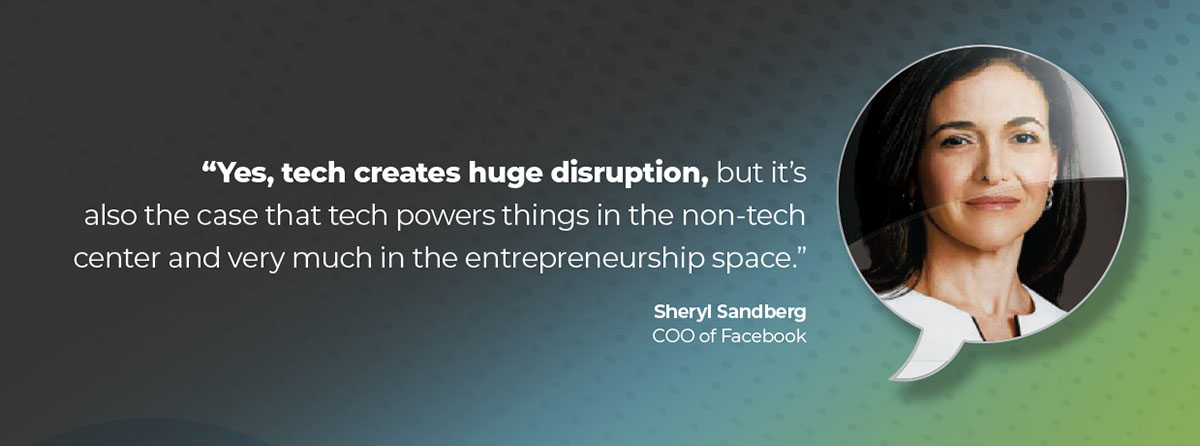Topics
Addressing Blind Spots in Enterprise L&D

Traditional Learning and Development approaches can lead to blind spots that prevent growth. The challenge presented to L&D leaders is building the workforce of the future—today. To do that, leaders should keep both eyes toward the future with an occasional side glance to monitor for blind spots.
One reason for blind spots may be because the L&D program is not baked into the fabric of the company. A survey by Open University revealed that half of L&D decision-makers think learning is not seen as important in organizations, and 42 percent lack direction from the top brass. This may be because L&D does not have a seat at the table, or perhaps the L&D team needs more entrepreneurial individuals to carry out its agenda.
To earn that seat at the table, the business side primarily understands the ROI aspect of any investment. It can be tricky to measure the ROI for learning programs. However, CGS has written a guide on this, and the Lumina Foundation has completed several case studies:
- Cigna realized a 129 percent ROI from its educational reimbursement program between 2012 and 2014.
- Discover marked a 114 percent ROI on its tuition reimbursement efforts.
- A large communication technology company’s tuition assistance program saw $54.2 million in savings.
Help your C-level leaders to understand the many benefits of well-crafted learning:
- Improved employee performance through addressing skills gaps
- Reduced turnover when employees see the company is invested in their future and are more engaged
- Fostered consistency by ensuring all employees follow the same practices and protocols
- Increased innovation as skilled employees gain confidence to develop new products and services
- Enhanced company reputation since job seekers seek out companies that offer training—professional development is a top deciding factor in applying for a job for Gen-Z and Millennials
Prioritizing an organization’s L&D is one way to attract more entrepreneurial employees. These forward-looking and results-focused people will help propel a program and its results. And with a seat at the table and the right team members, your learning program can begin in earnest.
Yet with new disruptions and advances, learning professionals must watch out for any areas that can slow down the pace of change. To maintain full visibility, focus on these areas:
- Work and learning
- Disruptors
- Career
Work and Learning
The first common blind spot is to pay attention to the overlap between work and learning—learning is embedded in the work people do every day. The average employee only has time to devote 1 percent of his/her work week to professional development, according to Bersin by Deloitte. That means only 4.8 minutes a day can be allotted for training in a normal 40-hour work week.
As new technology creates work efficiencies, aim to use some of that extra time for learning. Also look for ways to leverage technology to directly increase L&D efficiency. Training that would take two hours to accomplish in a classroom could potentially be accomplished in just 45 minutes with eLearning and 29 minutes with VR, finds PwC.
But time is still of the essence, so L&D teams also need to find ways to incorporate learning more into the day-to-day work employees are doing. Learning professionals need to speak the language of business to ensure content is always in context and ready in time of need.
Think about the constant conversion of work and learning and set yourself up for a tighter integration. Learning is typically designed separately, so you should consider a broader definition of the learning organization and build it to embrace continuous learning.

Disruptors
Disruptors are another blind spot to watch out for. It’s important to focus on trends outside of L&D because disruptors—such as Uber in the ridesharing sector, Airbnb in hospitality and Netflix in entertainment, form and influence learner expectations. When new technology appears and disrupts, leverage those advancements in learning wherever possible.
Learning professionals need to keep abreast of popular websites—even popular digital entertainment that has nothing to do with learning—and how this content is changing in their models, in their operations and how they navigate.
In addition to TV and movie streaming sites like Netflix, many people are also going to streaming platforms to watch video games. Viewership on Twitch, the largest gaming streaming platform, more than doubled from Q1 2020 to Q1 2021, reaching 6.3 billion hours streamed during the quarter. And L&D teams are starting to adapt to these trends. One-quarter of L&D professionals are planning to use more gamification as a learning format in 2021, according to our enterprise learning trends survey.
Career
McKinsey finds that, “Skill building is more prevalent than it was prior to the pandemic, with 69 percent of organizations doing more skill building now than they did before the COVID-19 crisis.” It’s clear that companies are focusing on preparing staff for the evolution of work.
Career pathing is a third area not to take one’s eye off in learning and professional development. The key here is to provide the right content at the right time. Give your workforce access to emerging topics, keep them sharp and enable continuous learning. The half-life of a learned skill is decreasing, so focus on skill reinvention to support career progressions, especially as the need for more digital skills increases.
It is important to pay attention to all phases of professional development and support employees through each stage of their career path and learning curve. Think about learning holistically to elevate the conversation. Rather than crafting learning programs, you are driving a living, breathing learning culture at an organization. This will boost your employee engagement, increase innovation and reduce turnover.
The Future of Work
Addressing blind spots is just one recommendation and section in our report, Finding the New Normal: A Practical Guide to The Future of Work for L&D Leaders. Get your copy today to learn about the changing role of L&D, changing skills and building resiliency in your learning programs. The time to adapt, pivot and prepare the workplace of the future is now.

